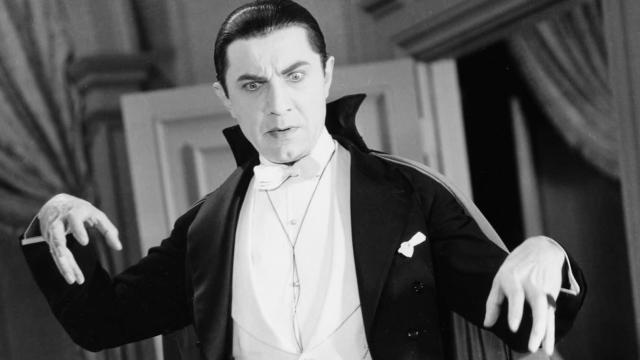Myths about vampiric creatures that rise from the dead to feed on the blood of the living predate Bram Stoker’s Dracula and the modern concept of extravagant, seductive vampires by hundreds of years. But stories about aristocratic, sometimes campy vampires who vanish into puffs of smoke and must be invited into human homes have arguably been defined by it.
As far as classic monsters go, vampires are up there with the likes of werewolves and walking mummies in terms of their status as pop culture icons at the centre of beloved books, films, and television series. But if we’re being perfectly honest about things, we all do a significant amount of work to downplay how… ridiculous vampires tend to be in modern depictions.
One of the more interesting things about the way we think about vampires is how everyone understands the basic elements of a “classic” vampire—aversions to garlic, crosses, sunlight, etc.—and how different stories have selectively emphasised or deemphasized those elements in service of the narrative.
The Passage’s vampires are a far cry from The Strain’s, which are farther still from Twilight’s famously sparkly Cullen clan, but what each of these variations of vampire have in common is this: they all felt as if their creators were purposefully trying to distance them from classic Dracula-vampires.
That’s not to say that these reimagined vampires aren’t fascinating in their own ways, but it does speak to the lengths to which storytellers will go to get their vampires out of the shadow of the old-school, caped, cowled ghouls.
The dapper, gentlemanly vampire we all know Dracula to be actually originated in John Polidori’s 1816 short story The Vampyre, which told the tale of a wealthy, unsuspecting man who unknowingly becomes the travelling companion of a vampire posing as a member of the human aristocracy.
The Vampyre kicked off a wave of other English writers creating stories about this type of vampire, but Stoker’s Dracula (published in 1897), Hamilton Deane and John Balderston’s 1924 stage play based on the movie, and the 1931 live-action cinematic adaptation of the play are what defined vampires for mass audiences in ways that can still be felt today. (Hat-tip to 1922 silent-film classic Nosferatu, as well.)
Again, by the 20th century, vampire stories were already old hat, but what was new about the silver screen Dracula was the sheer theatricality with which the movie presented its title character. Bela Lugosi’s Dracula was a larger than life spectre of debonair darkness and dread that put Universal on the map for its monster movies.
The aspects of Lugosi’s performance as Dracula that made it iconic—like his stilted delivery — weren’t exactly all that rooted in any core elements of vampire lore, but they’ve become synonymous with vampires in a way that’s impossible to deny.
Dracula’s an integral part of the modern vampire’s narrative DNA, meaning there’s a certain degree to which all vampires are kind of, well, silly—because Dracula’s rather silly, especially when you consider the character in a modern context.
What makes both versions of What We Do in the Shadows’ vampires so funny is the way the movie and series do away with any attempt at modernising their lead vampires or trying to make them gritty and cool, because doing so would only serve to get in the way of the vampires’ Dracula-infused essence. Like Lugosi’s Dracula, Shadows’ vamps are scary in moments, but they’re also helplessly out of touch the way old-world vampires living in present-day big cities would likely be.
What We Do in the Shadows implicitly understands that virtually all modern depictions of vampires are merely presenting us with different shades and flavours of Dracula. Sometimes these Draculas as distressingly macabre, and others are merely just pretty, deadly things to be wary of at night. But all of them are, in their cold, unseating hearts, Draculas — which is to say, kind of funny.
